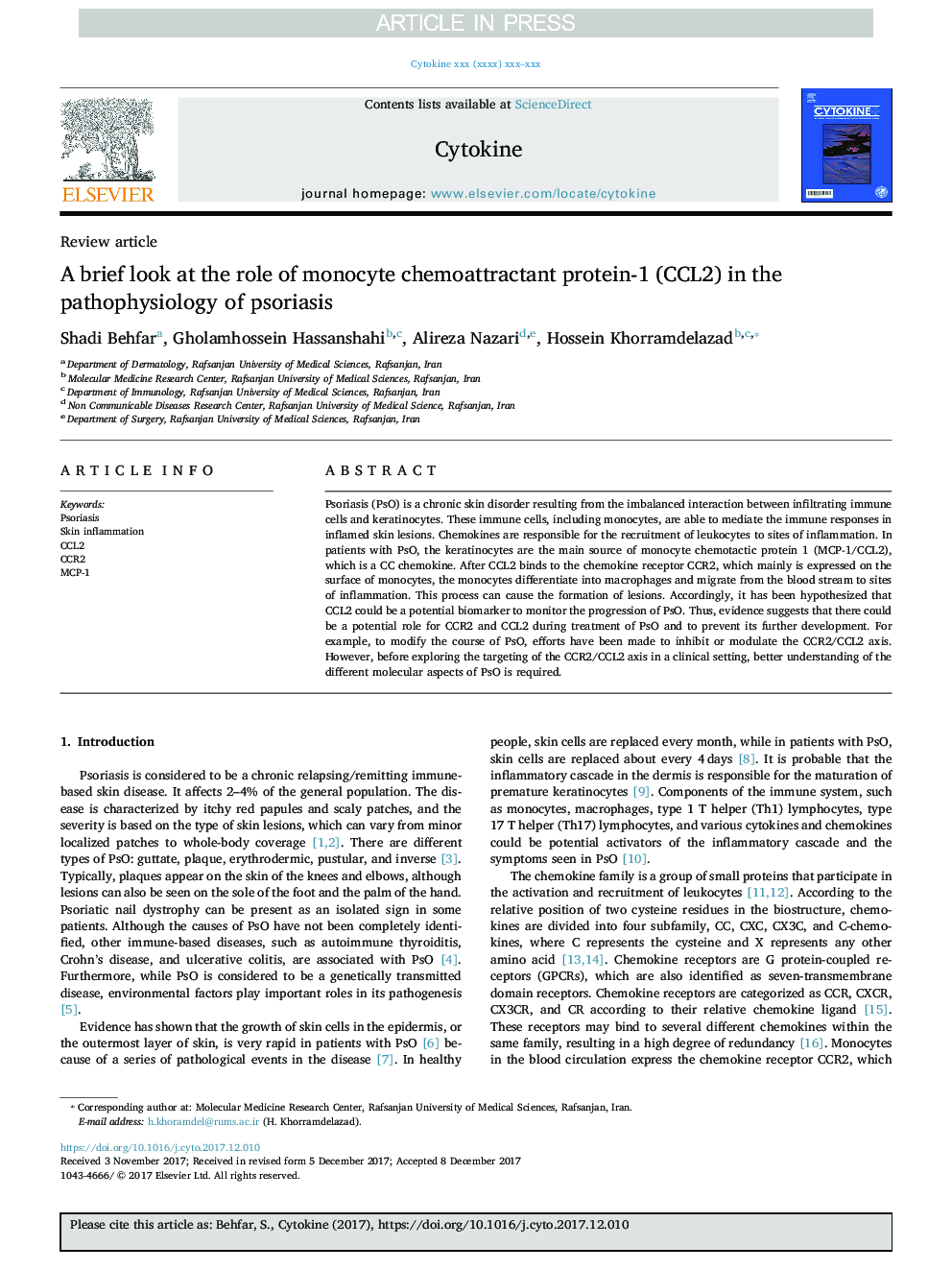| کد مقاله | کد نشریه | سال انتشار | مقاله انگلیسی | نسخه تمام متن |
|---|---|---|---|---|
| 8628696 | 1568702 | 2018 | 6 صفحه PDF | دانلود رایگان |
عنوان انگلیسی مقاله ISI
A brief look at the role of monocyte chemoattractant protein-1 (CCL2) in the pathophysiology of psoriasis
دانلود مقاله + سفارش ترجمه
دانلود مقاله ISI انگلیسی
رایگان برای ایرانیان
موضوعات مرتبط
علوم زیستی و بیوفناوری
بیوشیمی، ژنتیک و زیست شناسی مولکولی
علوم غدد
پیش نمایش صفحه اول مقاله

چکیده انگلیسی
Psoriasis (PsO) is a chronic skin disorder resulting from the imbalanced interaction between infiltrating immune cells and keratinocytes. These immune cells, including monocytes, are able to mediate the immune responses in inflamed skin lesions. Chemokines are responsible for the recruitment of leukocytes to sites of inflammation. In patients with PsO, the keratinocytes are the main source of monocyte chemotactic protein 1 (MCP-1/CCL2), which is a CC chemokine. After CCL2 binds to the chemokine receptor CCR2, which mainly is expressed on the surface of monocytes, the monocytes differentiate into macrophages and migrate from the blood stream to sites of inflammation. This process can cause the formation of lesions. Accordingly, it has been hypothesized that CCL2 could be a potential biomarker to monitor the progression of PsO. Thus, evidence suggests that there could be a potential role for CCR2 and CCL2 during treatment of PsO and to prevent its further development. For example, to modify the course of PsO, efforts have been made to inhibit or modulate the CCR2/CCL2 axis. However, before exploring the targeting of the CCR2/CCL2 axis in a clinical setting, better understanding of the different molecular aspects of PsO is required.
ناشر
Database: Elsevier - ScienceDirect (ساینس دایرکت)
Journal: Cytokine - Volume 110, October 2018, Pages 226-231
Journal: Cytokine - Volume 110, October 2018, Pages 226-231
نویسندگان
Shadi Behfar, Gholamhossein Hassanshahi, Alireza Nazari, Hossein Khorramdelazad,